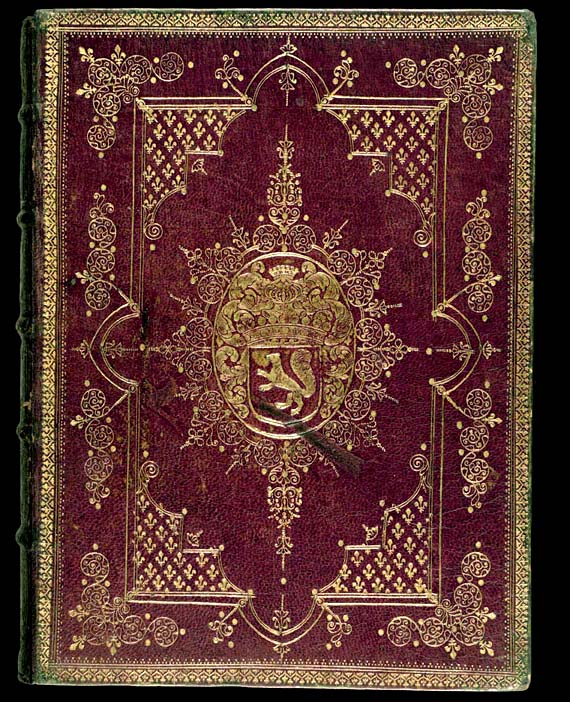

| I discovered this binding in the BLDB by searching through the entire 17c collection while looking for Caumartin tools, it was only after I had started to work on the Ruette tools that I returned to look at this binding which I had marked in my files with four stars. It is lucky that I did, as here again we find ROLL II, the detail of which was clear enough to reveal the flaw that confirms its identity. This is an important discovery for a number reasons which will become evident after reading the British Library notations for this binding shelfmarked, as c46h7.... |

| The British Library staff have failed to recognize the decorative imprints of this binding, they derive from the tools of Antoine Ruette, as I shall demonstrate below. First, however a number of important questions come to mind, was this binding executed after Rocolet's death?... is it an 'imitation' of Rocolet's style?... would the Kings binder, nearing retirement or perhaps already retired after more than 20 years in this high post, imitate the work of Rocolet? Could this binding have been made before the death of Rocolet? To shed some light on this and perhaps answer these questions we will examine firstly the work of Rocolet, and then the example of an "imitator" sited in the BLDB notation above (Musée Condé Château de Chantilly, Reliures françaises du XVIIe siècle, p. 60, n. 24). This is an invaluable guide and constant reference, which contains excellent high quality photos of the more important bindings of the period. On Page 48, the authors present a 1650 Rocolet binding made for Cureau de la Chambre. |

| On page 58 we discover another Rocolet binding, this is from 1659 and appears to be the style that was copied by the 'imitators' |

| I have enlarged these images from the publication size, so that they cam be seen here close their actual size (at a monitor resolution of 600 x 800 pixels) click on these images to see a further enlargement. |
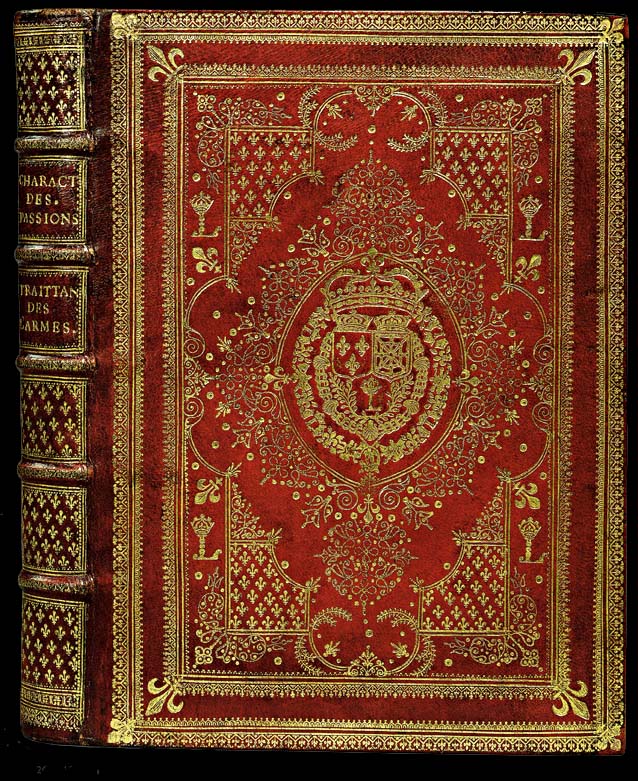
| Finally we come to another Rocolet binding which appears very similar to that of Ruette, This binding is found in the BLDB and is shelfmarked as Davis523. |
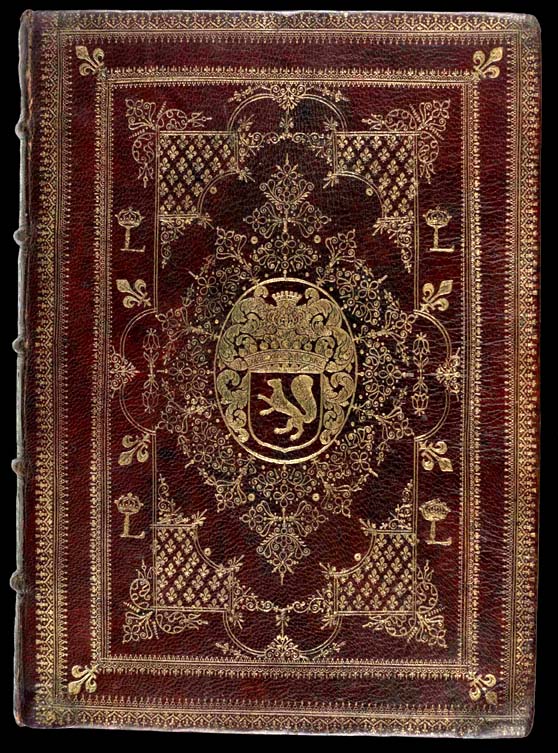
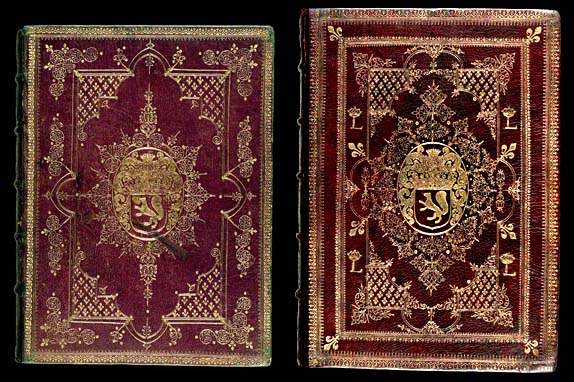
| In Comarative Diagram 1, we see that Ruette has used a single inner frame whereas the 1659 Rocolet binding has 2 inner frames as does the imitation as well as the other 1659 Rocolet binding (Example #23). While the earlier, Rocolet 1650 binding is of a single frame. |
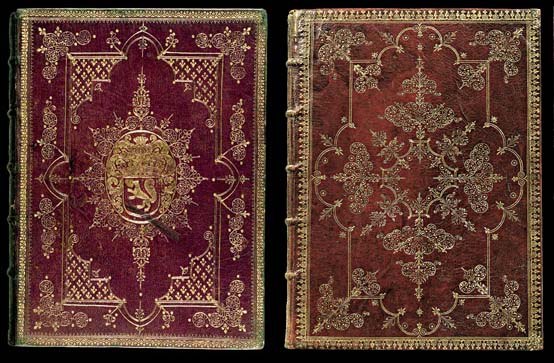
|
In Comparative Diagram 2 one will notice that both of these bindings employ a single inner frame and that the distribution of decorative elements around each corner of this frame are very similar. Also note the format of these, both are 24 x 18 cm). We can therefore question the positioning of this Ruette binding in the camp of the "imitators" with a subsequent post 1662 date. We can now proceed to examine the more important tool imprints of the c46h7 binding. As mentioned above, ROLL II plays a major part in identifying this binding, even though blurred in the enlargement, the pod flaw is still plainly visible and re-appears at the correct interval of 82 mm. |

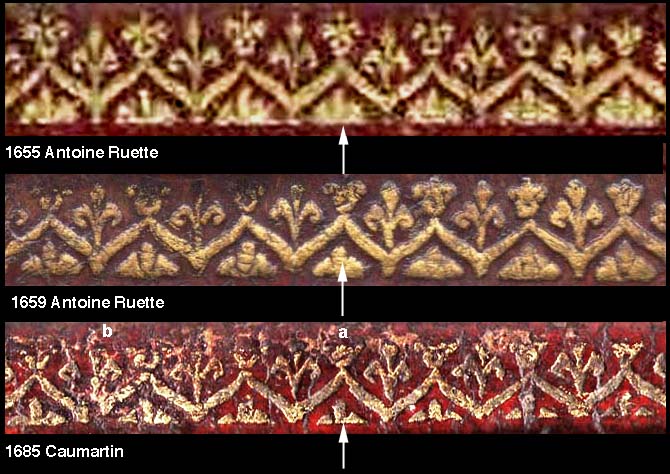
| In Comparative Diagram 4 you will notice a rupture in the 1685 imprint at point 'b'. This rupture, which appears at regular intervals in the Breviarium imprints, has not been found in any other ROLL II imprint. Also note that the pod flaw appears in the c46h7 imprint (Diagram 3 point 'a') at the predicted position which is at the start point of the 1659 imprint, here the leather has torn and the imprint no longer in place however the predicted position is correct. |
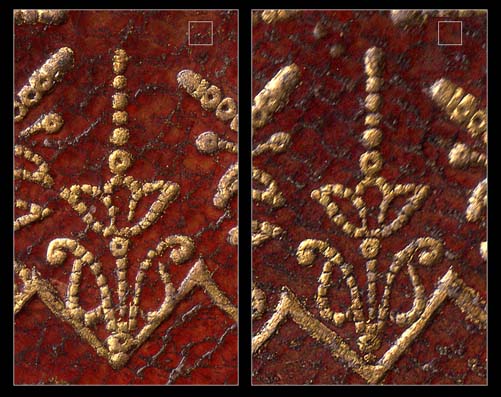
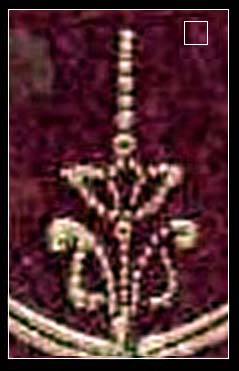
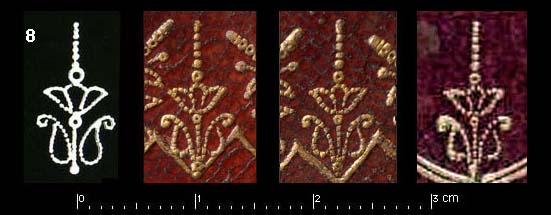
|
It appears that, by the mid 17th Century every reputable French bindery possessed a tool similar to this Ruette 8 model. One needs an expert eye and good memory to identify the imprint of this tool in bindings of unknown provenance, which explains why I have reproduced a here at very high resolutions. The quality of the c46h7 imprints of this tool, range from poor to barely acceptable however there is enough detail in this particular example to confirm that it derives from the same tool that was employed on the 1659 binding. (see the next page "Le Maitre Doreur".... while collecting and assembling all the imprints similar to Ruette 8, in one Comparative Diagram, I discover new clues in the Caumartin tools!) |
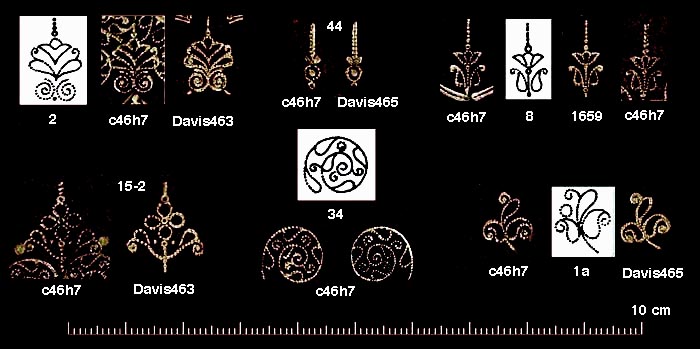
| Go to Digital Alchemy | return to the home page of cyclopaedia.org |